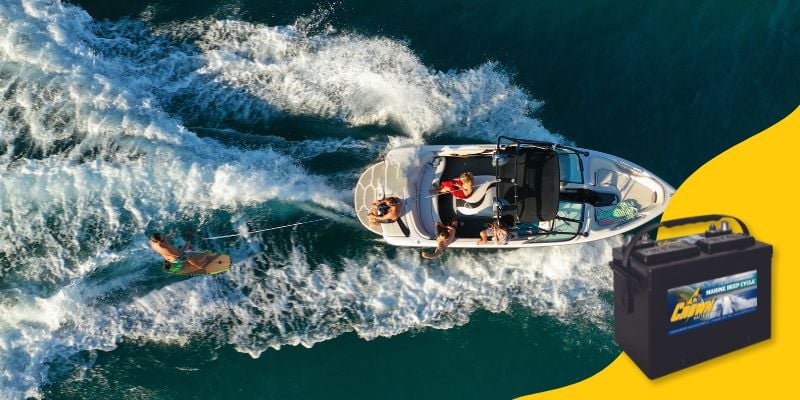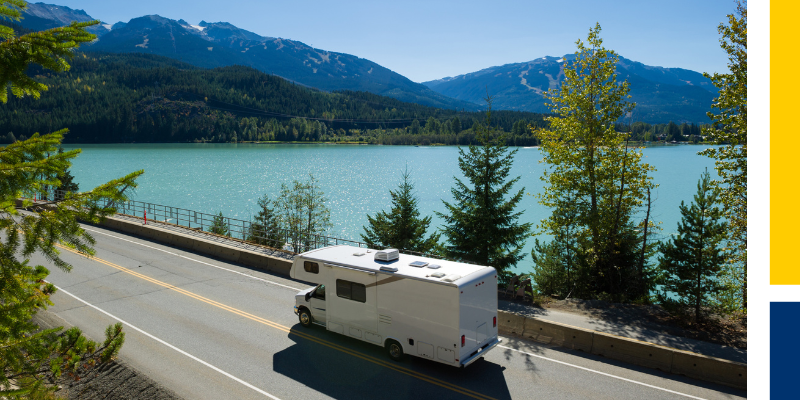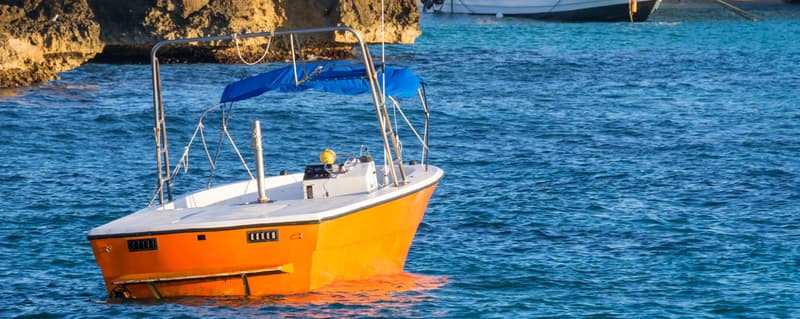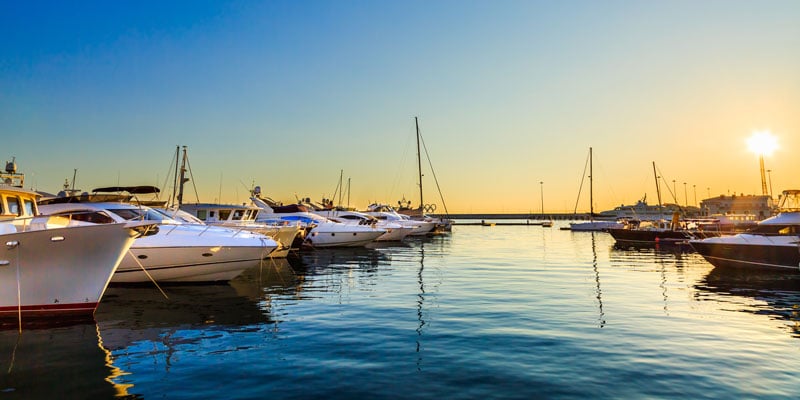Whether you’re fishing or boating, we’re betting you want the best performance from your boat and electronics. And that means you need deep-cycle batteries.
But what are they – and how are they different from starter batteries?
In the next few minutes, you’ll learn the basics, along with proven tips that enhance your batteries’ performance and lifespan.
Let’s dive in!
Marine Deep-Cycle Batteries vs. Starter Batteries
Marine batteries are essential components of any boating system, and they typically come in two styles.
Deep-cycle batteries maintain a stable power supply when you’re running trolling motors, navigation systems, fish finders, and other marine accessories. They are designed to deliver a constant, steady current over an extended period. And that ensures your devices and equipment receive the optimal voltage to function at their best.
For most boats, you also need starter batteries. But their design and use are different. To help, we’ve condensed key points into this chart:
| Marine Deep-Cycle Batteries | Starter Batteries (aka cranking batteries) | |
| All-day power or short bursts of energy? | All-day, steady flow of power | Powerful bursts of energy for a short time |
| Application: | Continuous energy for onboard electronics, refrigerators, accessories, and trolling motors | Start your boat engine |
| Design differences: |
(Recyclable lead “plates” = metal lattices that hold energy-storing material.) |
|
In other words: Deep-cycle batteries deliver a lower current over an extended period for electronics and trolling motors. By comparison, starter batteries provide high current for a short time while you start your boat engine.
Because both battery types are designed for entirely different purposes, they suffer when used in the wrong application. For instance, a starting battery will overheat and lose capacity if used for trolling. And a deep-cycle battery may struggle to deliver enough instantaneous power to start a boat engine.
A Third Option (for some boats)
For some boating applications, there’s an exception: Dual-purpose marine batteries for cranking and trolling. Built to withstand extended discharges and recharges, these batteries bridge the gap between deep-cycle and starting batteries. But they don’t work as well as separate batteries. And they’re more prone to overheating in demanding conditions and long days offshore. Talk with a boat battery specialist if you have questions about whether dual-purpose batteries are right for you.
Selecting the Right Battery Type
Marine deep-cycle batteries are available in various chemistries, including flooded lead-acid, absorbed glass mat (AGM), and lithium-ion. And each option has unique advantages and drawbacks, depending on how and where you use your boat.
- Flooded, 99%-Recyclable Lead-Acid Batteries: These proven batteries contain liquid electrolyte and offer long life and excellent lifetime cost. They require regular maintenance and are more susceptible to damage from vibration and incorrect charging.
- Near-Zero Maintenance Absorbed Glass Mat (AGM) Batteries: AGM batteries are sealed, nearly maintenance-free, and far more vibration-resistant than flooded lead-acid batteries. They have a low self-discharge rate and can deliver high currents, making them suitable for deep-cycle (and starting) applications. Like flooded lead-acid batteries, AGM models are 99% recyclable. Despite their greater durability and convenience, AGM batteries are only ⅓ the cost of comparable lithium-ion (LI) and lithium-iron phosphate (LiFePO) batteries.
- Near-Zero Maintenance, 5% Recycled Lithium-Ion (LI) Batteries: LI batteries are also nearly maintenance-free. Their higher energy density reduces weight but also makes them more prone to thermal runaway and fires. Their cost is often 3X as much as flooded lead-acid batteries with the same storage capacity, and their operating and charging temperature ranges are more restricted.
Of course, whatever battery you choose, you’ll need to be sure it’s the suitable capacity for your boat.
Understanding Battery Capacity
Battery capacity (stored energy) is crucial when selecting marine deep-cycle batteries. Too little capacity = not enough power. That can leave you stranded without electronic equipment — or cause your batteries to die early. And too much power wastes your money.
Fortunately, figuring out how much battery capacity you need is easy. Here are the basics:
Capacity = how much energy a battery can store and deliver. We measure it in ampere-hours (Ah). A higher-capacity battery can hold more energy, so it can power your onboard equipment for longer or support more devices. But higher-capacity batteries come with a heftier weight and price tag.
Here’s how to calculate how much battery capacity you need:
-
- DIY: You can calculate the total amperage draw by estimating how much energy each of your devices uses and how many hours you’ll operate it between charging cycles. Online marine battery capacity calculators can walk you through this.
- Expert help: For many people, it is easier to go to your local marine battery dealer – they’ll quickly walk you through battery sizing.
- DIY: You can calculate the total amperage draw by estimating how much energy each of your devices uses and how many hours you’ll operate it between charging cycles. Online marine battery capacity calculators can walk you through this.
Be sure your batteries are sized for TK(50%) Depth of Discharge (DoD) meaning a full day on the water will only use half your batteries’ capacity. If your batteries are too small, you’ll risk running out of battery when you’re still on the water, and your batteries will die early.
Remember: Temperature, discharge rate, battery age, and other factors can affect real-world capacity. Regular maintenance and proper charging will help ensure your batteries perform optimally and maintain their capacity over time.
With proper care, the right deep-cycle marine batteries can help provide many years of fun on the water… with great performance and hassle-free reliability.
Want to get the most from your deep-cycle batteries? Click here for our marine battery support brochure – its easy maintenance tips will help keep your batteries running at full power for years to come.
And for help picking the right deep-cycle batteries for your boat, visit your local Crown Battery dealer.












